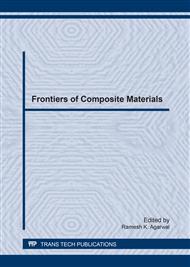p.1
p.10
p.14
p.17
p.21
p.25
p.29
p.34
Experimental Investigation on the Fracture Mechanism of Two-Layer Steel/Aluminum Explosively Welded Plate
Abstract:
The stereomicroscope, microscopic metallograph and scanning electron microscope (SEM) were adopted to investigate the fracture mechanism of two-layer steel/aluminum composite plates impacted by spherical fragment. The composite plates with the same total thickness (5mm) were fabricated by the method of explosive welding. In ballistic experiment, the spherical fragments were launched by a 14.5mm slip chamber gun to penetrate the composite plate. The effect of the combination state of the interface on the fracture mechanism was analyzed based on the experimental results. The results show that the fracture mechanism of the steel front plate is shearing and plugging and that of aluminum rear plate is ductile prolonging deformation when the tied interface failed by tension (or shearing and plugging when the interface combination remained connected).A narrow adiabatic shear band was formed in the local yield plate damaged by shearing and plugging during the penetration process.
Info:
Periodical:
Pages:
10-13
Citation:
Online since:
March 2017
Authors:
Price:
Сopyright:
© 2017 Trans Tech Publications Ltd. All Rights Reserved
Share:
Citation:


